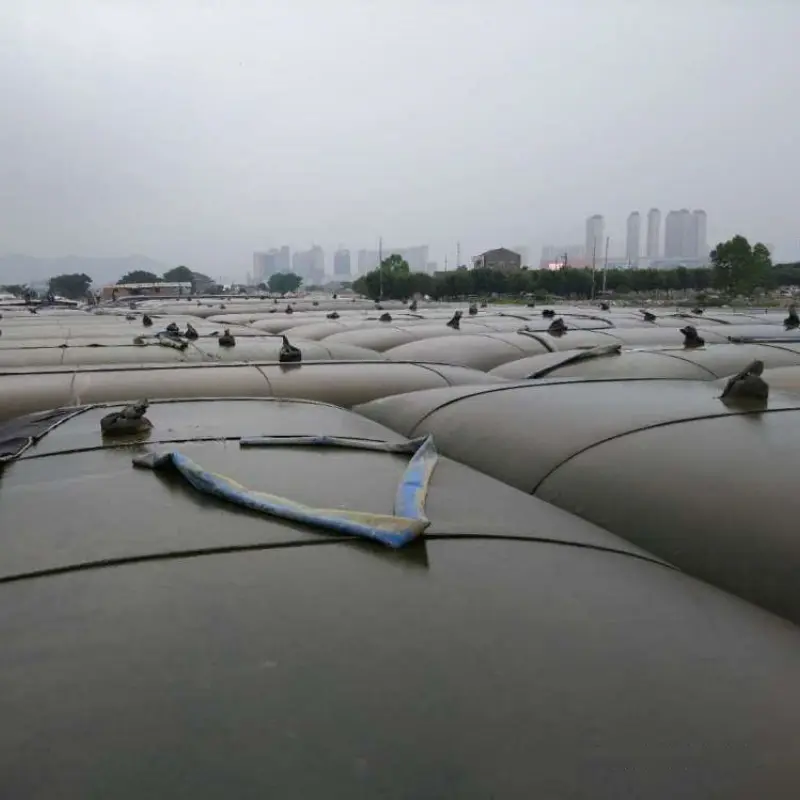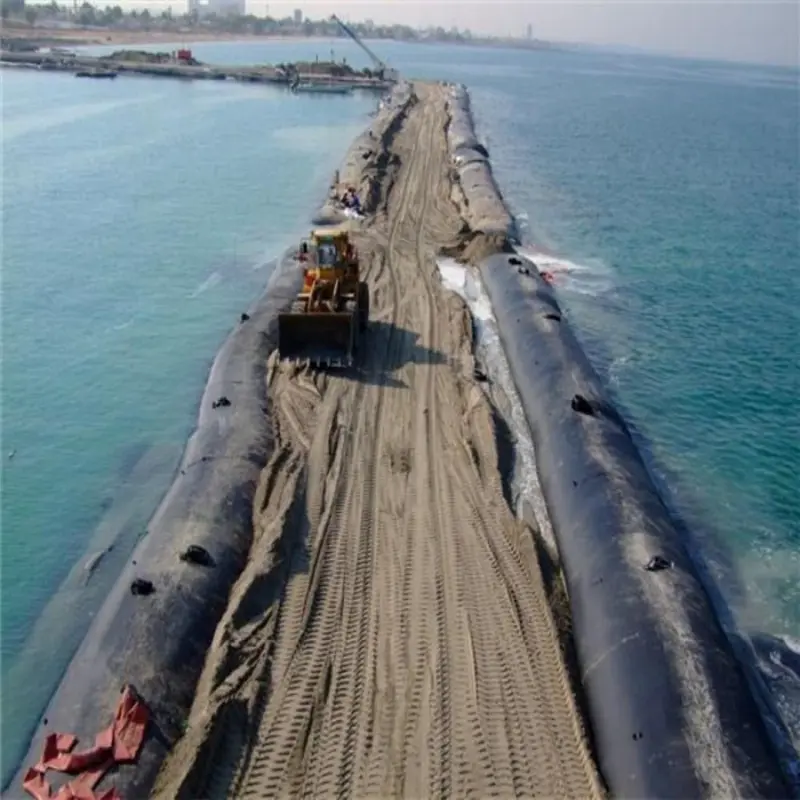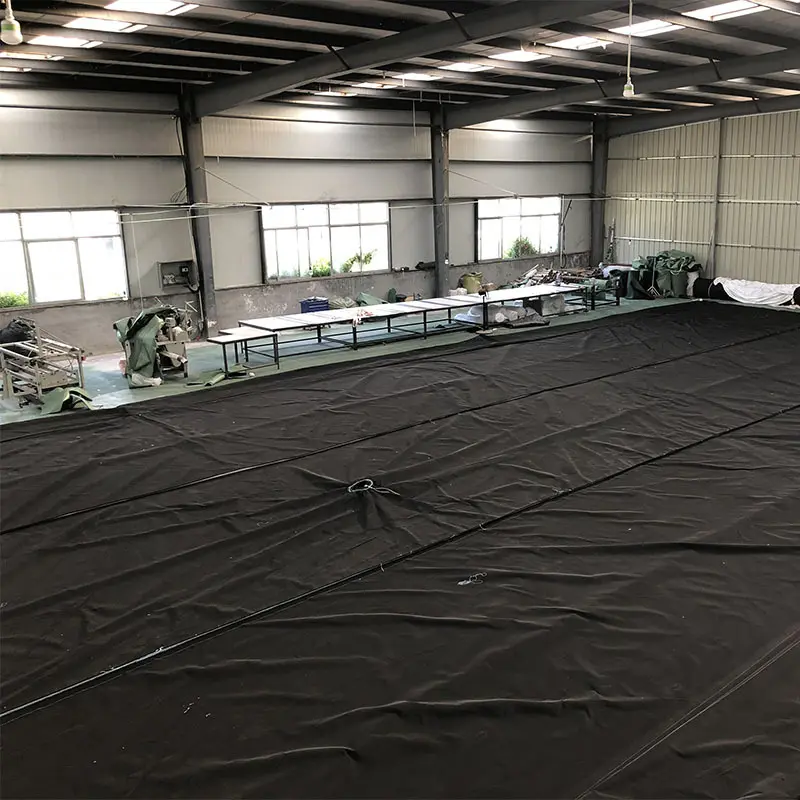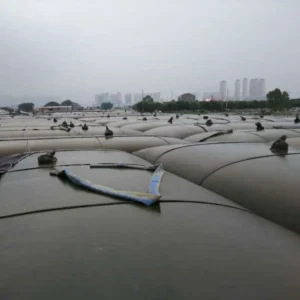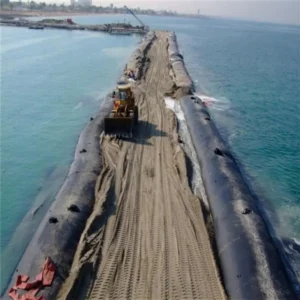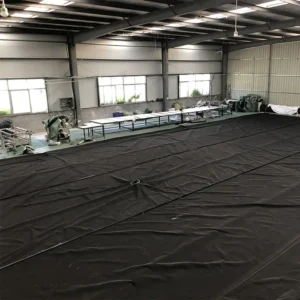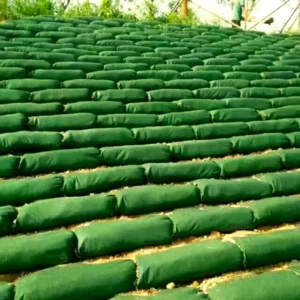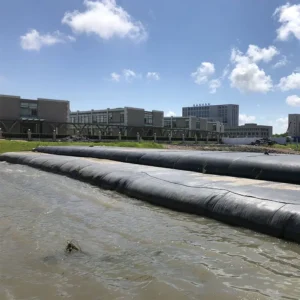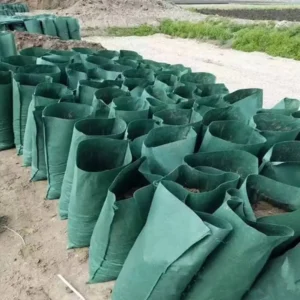Geotextile Tubes and Bags: Efficient Containment and Dewatering Solutions
Geotextile tubes are tubular containers woven from polypropylene yarns (flat filaments or fibrillated tapes) with engineered filtration properties. The dewatering and solidification method involves injecting polymer flocculants into dredged slurry at precise ratios. This chemically treated mixture is pumped into geotextile tubes, where pressure filtration separates water from solids. The process achieves significant sludge volume reduction while meeting environmental standards.
Key Advantages:
- Customizable dimensions: Diameter: 1-10m | Length: Up to 200m
- High adaptability: Adjustable capacity, easy transport/installation
- Superior performance: Excellent strength, filtration efficiency (92-96% pollutant retention), and long-term durability
- Space efficiency: Stackable design for optimal land use
- Cost-effectiveness: Lower cost per m³ than alternative solidification methods
- Rapid deployment: Short construction cycles with fully enclosed operation (prevents secondary pollution)
- Water quality compliance: Filtered effluent meets discharge standards
Standard Size
| Type | Diameter (m) | Length (m) | Thickness (mm) | Capacity (m³/m) | Common Applications |
|---|---|---|---|---|---|
| Small Tube | 1.0 – 1.5 | 10 – 50 | 3.0 – 4.5 | 0.8 – 1.8 | Erosion control, small sludge dewatering |
| Standard Tube | 2.0 – 3.0 | 20 – 100 | 4.0 – 6.0 | 3.1 – 7.1 | Riverbank protection, industrial waste |
| Large Tube | 3.5 – 5.0 | 30 – 150 | 5.0 – 8.0 | 9.6 – 19.6 | Coastal defense, mining tailings |
| Mega Tube | 5.5 – 10.0 | 50 – 200 | 6.0 – 10.0 | 23.7 – 78.5 | Harbor construction, major dredging |
| Sludge Bags | 0.5 – 3.0 | 5 – 20 | 2.0 – 4.0 | 0.2 – 7.1 | Agricultural waste, municipal sludge |
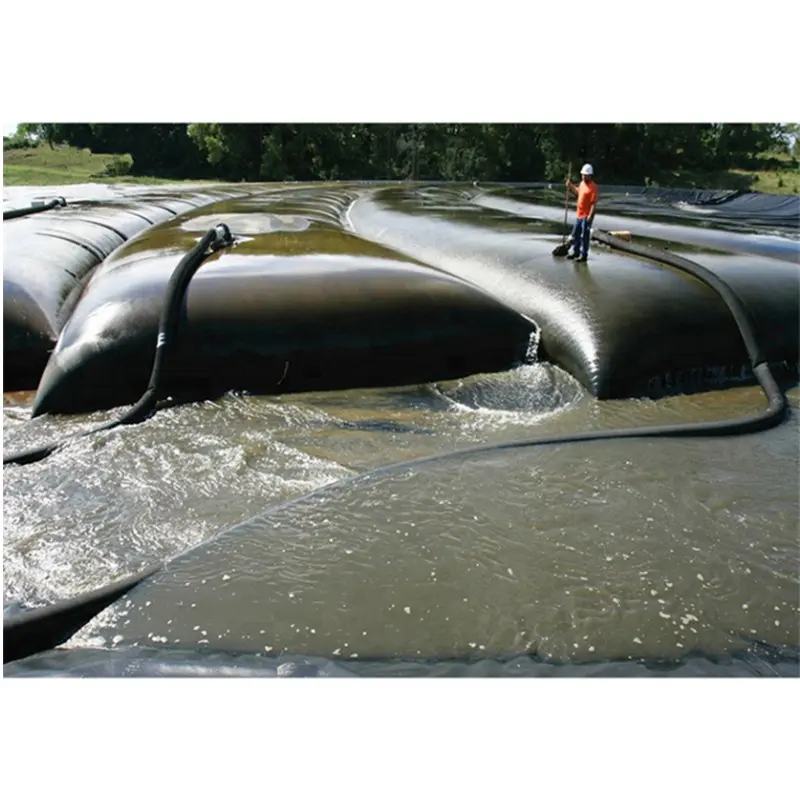
Applications in Engineering & Environmental Management
1. Municipal Sludge Treatment
Geotextile tubes process high-moisture sewage sludge (≥85% water content). Preloading accelerates dewatering, transforming sludge into reusable fill material. Stacked tubes can directly form sludge pit embankments, enabling waste-to-resource conversion with high efficiency and low costs.
2. Industrial Sludge Management
Effective for challenging industrial wastes with high viscosity, oil content, or inorganic compounds. Proven applications include:
- Heavy metal removal in nuclear plant cooling systems
- Volume reduction in paper mill sedimentation tanks
- Chemical/petroleum sludge treatment
3. Polluted Sediment Remediation
Addresses contaminated river/lake/harbor sediments through:
- On-site dewatering in stackable tubes
- Safe containment of hazardous materials
- Significant treatment cost savings
4. Mining & Mineral Processing Waste Recovery
Processes tailings and ore residues containing toxic/radioactive elements. International case studies (e.g., lead-zinc/gold mines) demonstrate:
- Valuable metal recovery through filtration
- Reduced environmental footprint
- Improved ecological restoration
5. Agricultural & Livestock Waste Treatment
Solves solid-liquid separation challenges in manure management:
- Filters solids for organic fertilizer production
- Discharges compliant effluent
- Cost-effective operations for large-scale farms
6. Construction Sludge Pre-treatment
Essential for hydraulically transported wastes (grout, tunneling slurry):
- Pre-dewatering enables safer transport
- Prevents landfill stability issues
- Eliminates secondary pollution risks
7. Coastal Settlement Management
Used for nearshore sediment processing (e.g., Venice Lagoon projects):
- Dewatered solids transferred to landfills
- Treated water returned to ecosystems
- Critical infrastructure preservation

